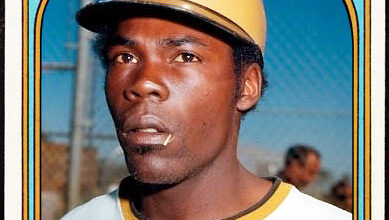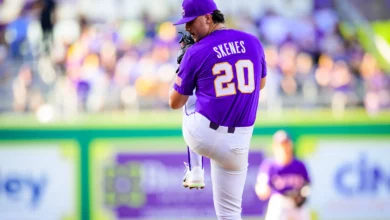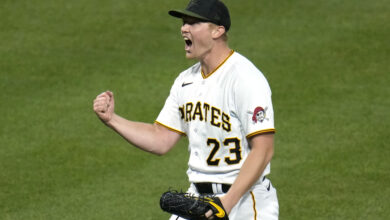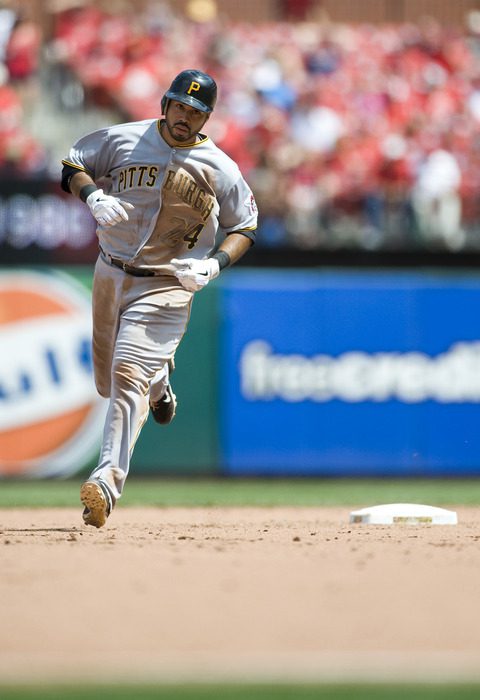
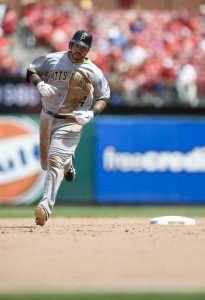
It goes without saying that it’s been a long, dreadful two decades for Pittsburgh Pirates fans. After a glimmer of hope for half of last season, it seems expectations have fallen and dreams of competing in the National League Central seem unlikely.
However, a shot at a winning season is not all that far off. When you’ve been struggling for so long, you really have to start looking at small, accomplishable, goals. Since Atlanta’s Sid Bream slid home to send the Pirates packing in 1992, the franchise hasn’t had a winning season.
The closest they’ve come was in 1997 when they finished 79-83. Had this been the NFL or NBA, that might have been good enough to get you into the playoffs, but baseball only rewards winners.
Enough ranting about the numbers and torturing Pirates fans who have suffered enough; there is reason to believe that 82 wins is surmountable and it could all happen this year if their first-round draft pick (second overall) in 2008 becomes the hitter everyone thought he would be.
Isn’t that always the case with top prospects these days? They’re given lofty expectations and then it seems like they spend the next five years of their career trying to fulfill those presumptions.
Pedro Alvarez, nicknamed “El Toro,” is a unique player for me because I watched him several times when he was in college. Living in Alabama, I’ve been able to attend the Southeastern Conference Baseball Tournament for the past seven or eight years and have witnessed some of the best collegiate baseball players the sport has to offer.
I’ll often be there on day one and watch pretty much every game. Of all the players I’ve seen come through, no one has impressed me as much as Alvarez. The Vanderbilt University team he played on has to be one of the greatest college teams of all time, with players like Mike Minor, David Price and Ryan Flaherty.
In college, Alvarez batted .386 his junior year with 18 home runs and 68 RBIs. In the 2007 SEC Tournament, he was 13-for-24 with two home runs, which is probably why I think so highly of him. It seemed like every time he came to the plate, he hit a ball hard somewhere. He was an awkward-looking kid in the sense he seemed short and a little stubby, but his swing was beautiful. It’s not easy to hit in the SEC.
The next time I saw Alvarez bat he was playing for the Indianapolis Indians. He looked shorter and stubbier than usual, and my initial thought was fame hit him and he quit caring. This was in 2010 and he was already playing for the Pirates triple-A team, which isn’t unusual for a college player to develop so quickly.
But he was struggling and looked uncomfortable swinging the bat. He hit .277 that year, which isn’t bad, but not quite what I expect from someone who dominated the college game. Destined to have their first round draft pick make a splash, the Pirates decided to bring him up anyway. He managed to hit .256 but struck out 119 times in 347 at-bats. That’s crazy for a guy who has that good of a swing.
In 2011 he was even worse, hitting just .191 in 235 at-bats, striking out 80 times. I remember watching him strike out three times in a game and thinking, what happened to this guy?
You never understand how good a top prospect is until he learns to deal with failure. Jason Heyward has gone through this recently and almost every great player does. Realizing he wasn’t the player he used to be and hadn’t lived up to expectations, Alvarez worked hard during the offseason to get his swing back. Pirates hitting coach Gregg Ritchie has emphasized using the opposite field, which seems like a no-brainer, but has really worked.
After starting out the season 2-for-30, it looked like nothing had changed. But between April 21 and May 3, he’s gathered 16 hits in 40 at-bats for a .400 average. That includes five home runs and 12 RBIs. He’s brought his average up from .067 to a respectable .257 in less than a month.
I watched at least three of his games in that period and listened to several others, and almost every hit he’s getting is to the opposite field. That’s a sure sign for any hitter that he’s in a groove. He now leads the team in home runs and RBIs, which isn’t saying much at this point, but he’s fifth in the league in home runs.
For Alvarez’s sake, and Pirates fans, too, I hope this is a sign of things to come. He’s a player I enjoyed watching develop, and I know the talent is there, so it’s frustrating watching him struggle. He’s only 25 years old, but the time is now if he’s to make a difference for this team.
That being said, the Pirates success this season will depend on Alvarez producing. His recent output has not exactly translated to wins, as the team is only 6-6 since his hot streak began. But that’s .500 baseball, and you can’t ask for much more out of this team.
But Alvarez becoming the player he was projected to be means a lot more to this team. If Clint Hurdle can stick his bat in the middle of the lineup, the Pirates would have more options with Andrew McCutchen and Neil Walker.
For instance, they could finally have a leadoff hitter in McCutchen and either place Alvarez or Walker in the three-hole to drive him in. That would be the ultimate lineup, but more realistic and for the more immediate future, you could protect McCutchen by putting Alvarez in the cleanup spot and either move Walker to fifth or second in the lineup.
Jose Tabata is a nice player, but he’s not a table setter at the top of your lineup. If the pitching staff is able to harness its early success and sustain it throughout the season, the Pirates will need some flexibility in their lineup to generate runs. There isn’t much to work with, but with Alvarez hitting near his potential, they should be able to put some runs on the board and hopefully put an end the misery.
With 11 wins on the season, the countdown has started; only 71 more to go.


